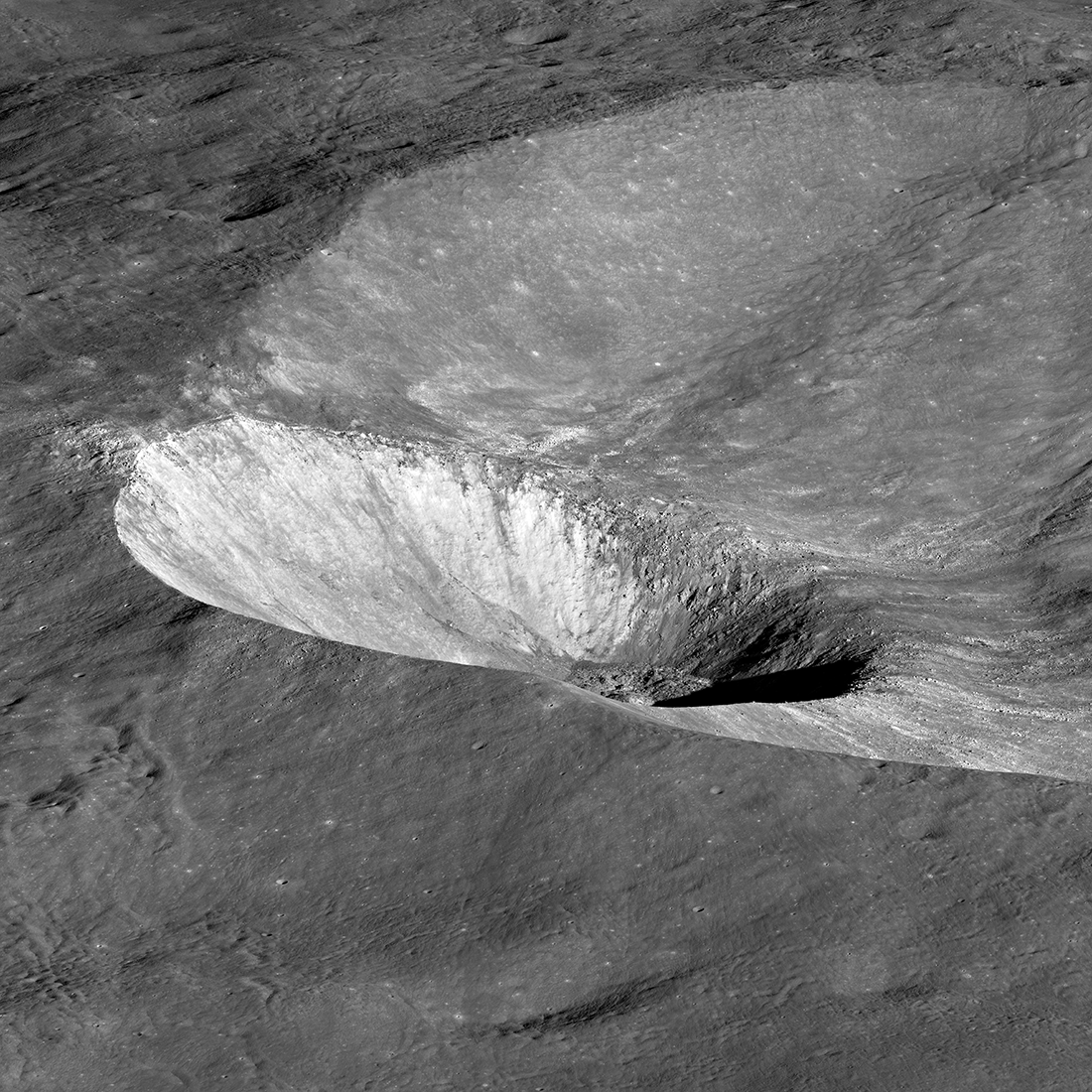Hawke Crater

| Credit | NASA/GSFC/Arizona State University |
|---|---|
| Language |
|
Hawke crater, eight miles (13 kilometers) wide, is noticeably tilted because the impactor - an asteroid or a comet - that excavated it struck the sloping inner wall of Grotrian crater. Also visible are light-colored rays that attest to the crater's youth, as well as subtle signs of darker impact melt. This image comes from the LROC camera aboard NASA's Lunar Reconnaissance Orbiter. Image width is about 12 miles (20 kilometers).
The International Astronomical Union (IAU), the organization tasked since 1919 with bringing order to astronomical chaos, reviews the names proposed for features in the Solar System. Names must follow established themes. On the Moon, craters are mostly named for lunar scientists, physicists, and astronomers. For example, William Herschel, who discovered Uranus and coined the term "asteroid," has a crater, as does his sister and research partner Caroline Herschel, who discovered eight comets. There are craters named for Albert Einstein, Johannes Kepler, Nicolaus Copernicus, Max Planck, Aristarchus, and many other famous scientists.
Living scientists are not commemorated on the Moon. Before a scientist’s name can be applied to a crater, she or he must have been deceased for at least two years. This permits a period of calm reflection, during which the community of scientists can consider whether their colleague deserves a place among the immortals.
In the case of Dr. B. Ray Hawke, who passed away on 24 January 2015, there was no debate about whether a lunar crater should be named for him. B. Ray, as he was known to his many friends, specialized in everything lunar. He was a member of the LROC team and performed lunar remote sensing using Earth-based telescopes. Just as important, he tirelessly mentored lunar scientists as they began and built their careers and dedicated himself to the distribution of lunar data.

